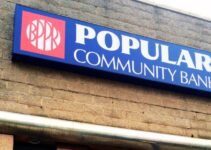SWOT Analysis of HUL. Hindustan Unilever Limited (HUL) is an Indian consumer goods British-owned company. The company came into existence in 1931 under the name of Hindustan Vanaspati Manufacturing Co. The headquarter of the company is in Mumbai, Maharashtra, India.
Some of the main products and services of HUL are as follows;
- Water purifier
- Skincare
- Personal care
- Cleaning agents
- Foods
- Beverages
- FMCG (fast-moving consumer goods)
Key statistical facts and figures about HUL are as follows;
- The annual revenue of the consumer goods manufacturing company in 2023 was 7.7 billion US dollars
- Out of which, the net income of the company was 1.3 billion US dollars
- Approximately 21,000 employees are working for the company to manage its operations
Some of the top competitors of HUL are as follows;
- Driscoll Children Hospital
- Artemis Hospitals
- LifeBuoy
- mDhil
- Sun Pharma
- Dr. Reddy’s Laboratories
- BOOST
- Dabur
- Cipla Inc
- P&G
- ITC
- Nestle India Ltd
- Tata Consumer Product Ltd
Today, we’ll discuss the swot analysis of HUL (Hindustan Unilever Limited). It is going to focus on the internal strengths and weaknesses; external opportunities and threats to the consumer good company. Here’s the swot analysis of HUL (Hindustan Unilever Limited);
Strengths of HUL
Some of the main strengths in the SWOT Analysis of HUL (Hindustan Unilever) are as follows;
Brand Equity
Unilever Plc is the parent company of HUL and it holds approximately 61.90% market share of the company. The company is the leading consumer goods manufacturing brand in the Indian market; the company has employed more than 20,000 employees to manage its operations. However, it shows the strong brand equity of the company.
Market Reach
According to an estimate, HUL has a network of more than 6 million retail outlets. Out of which, 1.5 million retail outlets offer direct access to the customers. It shows the strong infrastructure of the company at the ground level to approach customers.
Recognized Brand
HUL is a well-recognized recognized Indian consumer. According to an estimate, the company has a network of more than 700 million customers in the Indian market. HUL offers a wide range of products and services in more than 20 categories.
CSR
HUL is a very active CSR (corporate social responsible) organization, and the company has taken various social welfare steps. Some of them are women empowerment, plastic recycling, project shakti, creating job opportunities for locals, and various others.
Marketing & Promotion
In order to remain active in the minds of customers, HUL launches various types of marketing and promotional campaigns to attract the attention of customers. The company employs various media channels like digital media, social media platforms, online ads, radio ads, and TV ads.
Research & Development
HUL has got a strong commitment to research and development in order to develop new products and services for the customers. In order to keep up with the latest market trends and creative products, the company has got two R&D facilities in India, and they are in Bangalore and Mumbai.
Weaknesses of HUL
Some of the main weaknesses in the SWOT Analysis of HUL (Hindustan Unilever) are as follows;
Controversies
HUL has been involved in various types of controversies, and skin whitening cream is at the top of the list. The company’s advertisement shows a dark skin single woman, and who finds a new boyfriend and white skin after using the HUL whitening cream. Many social activists have hailed the company’s ads campaign, and they claim it to be racist.
Limited Market Share
When we compare HUL’s market share with other competitive fast-moving consumer goods (FMCG) companies, then it is very low. It is no doubt, HUL is a leading consumer goods manufacturing company, and the company’s market share is very low comparatively.
Opportunities for HUL
Some of the main available opportunities in the SWOT Analysis of HUL (Hindustan Unilever) are as follows;
Merger & Acquisition
HUL should consider merging and acquiring other small or big FMCG companies. It is a quick and fast way of increasing the company’s market share. Since the company has got access to vast capital resources, merger, and acquisition won’t be a problem for the company.
Rural Market
Indian rural market has got great growth potential; HUL should consider tapping into the rural market. The company has already covered a significant portion of the urban market. Now, it is time that the brand should think outside the box and enters the untouched and untapped markets.
Threats to HUL
Some of the main potential threats in the SWOT Analysis of HUL (Hindustan Unilever) are as follows;
Competition
The consumer goods market has become highly competitive in recent years. There are various FMCG companies and brands (local and multinational) operating their business in the same market; offering more or less similar types of products and services. It has become highly competitive for the company to maintain its position in its presence.
Regulations
Some of the company’s products are under evaluation by FDI and other regulatory authorities. HUL should be various cautious about the regulatory authority and compliance with local laws. Otherwise, it would cost the company in the form of penalties and legal fees.
Conclusion: HUL SWOT Analysis Example Company
After an in-depth study of the swot analysis of HUL; we have realized that HUL (Hindustan Unilever Limited) is a leading Indian consumer goods manufacturing company. If you are learning about the business of HUL SWOT, then you should keep in mind the abovementioned internal and external factors.

Ahsan Ali Shaw is an accomplished Business Writer, Analyst, and Public Speaker. Other than that, he’s a fun loving person.


